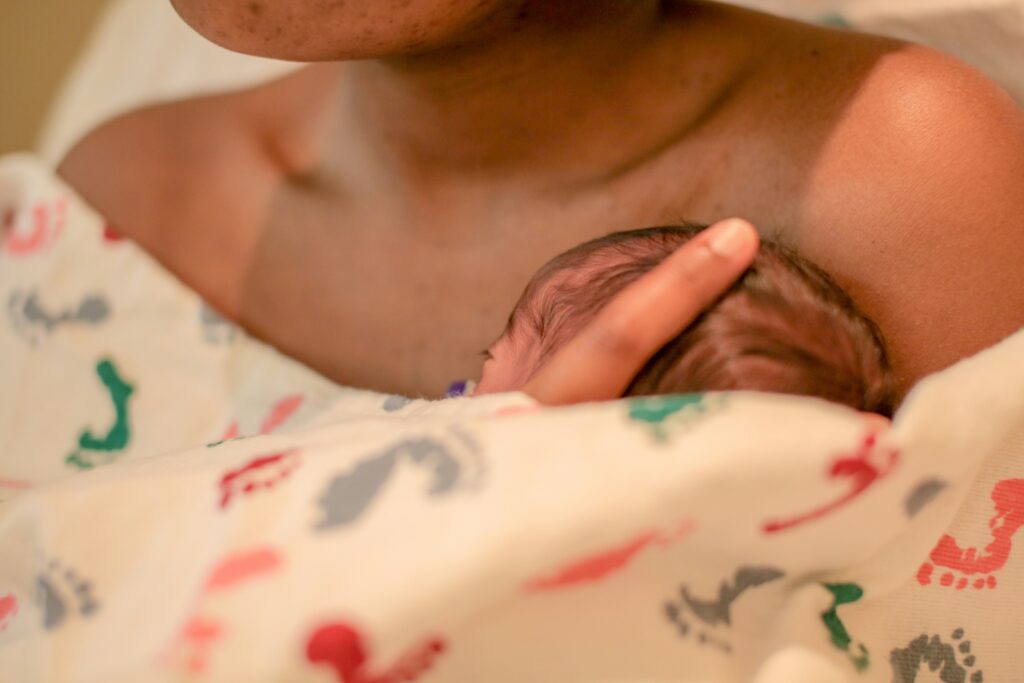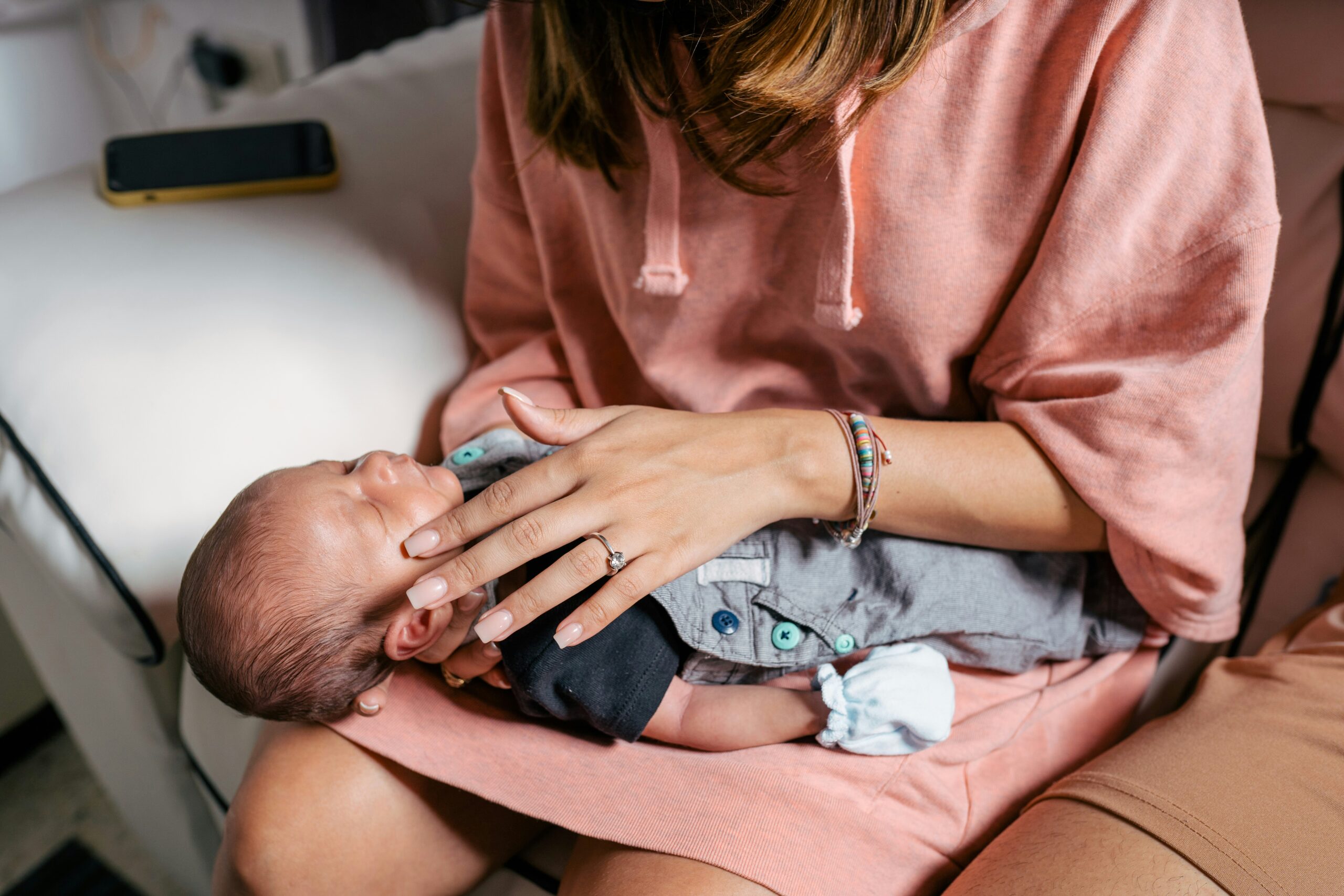When I was pregnant with my second baby, I felt like I had the whole labor and birth thing figured out. I mean, I’d been through it before and had—between my two pregnancies—32 or so prenatal appointments under my belt, countless hours of perinatal education and plenty of conversations with my doula.
During my first pregnancy in 2019, after weeks of trying everything (spinning babies, Webster technique, handstands in the water, acupuncture, etc.) to get him to flip, my son was in the Frank breech position when my water broke at 38 weeks.
I was immediately rushed into a C-section to give birth.
My recovery was horrible. My metal staples closing my wound stayed in for too long because my midwife at the time didn’t have the right tool to remove them. My insurance didn’t cover my postpartum care at the hospital because I gave birth on the second to last day of the year and my coverage changed and the hospital wasn’t on the “pre-approved” list. (Yes, really.)
I was extremely underprepared for what postpartum recovery would actually look like and cried every time my baby latched for two weeks (pain while latching is common but not normal. Please seek help from a lactation consultant if this is your experience).
So, after this traumatic birth and postpartum period, I was determined—more than ever—to have an unmedicated vaginal birth with my second. I yearned for a more natural, hands-off experience, and wanted to feel my body progress through labor and birth, rather than being whisked away on a gurney to a clinical operating room.
Thanks to my hours of research and planning, I was very prepared to attempt a VBAC (vaginal birth after cesarean)—but I wasn’t prepared for how to cope when my birth plan didn’t go as planned.
Fast forward to November 2021. I’m pregnant with my second child and it’s almost go-time!
After laboring unmedicated for nearly 24 hours, I finally reached 10-cm dilated and was given the all-clear to begin pushing.
Unfortunately, after two hours of pushing, my cervix became so inflamed that it was flipping back and forth between 9 and 10 cm. The midwives and my doula all agreed an epidural could possibly help things calm down, encourage my cervix to open fully, and allow my body to relax, all in hopes of encouraging my baby to descend through the birth canal.
I was in support of this plan, but I didn’t realize what it would entail.
Have you ever received an epidural at 10 cm while under strict orders not to move when all your body wants to do is push? It’s excruciating in every sense of the word. I had to fight every single bodily instinct of mine and focus solely on my breath and saving my baby. What surely only lasted a minute or two felt like hours, and I was utterly terrified the entire time.
But I did it. With the epidural in place, I rested while my cervix fully reached 10 cm once again. Soon enough, it was officially pushing time. I continued to push for another two hours, and the attending OB eventually decided it was time for a C-section. My baby’s heart rate was decelerating with each contraction (thankfully, it was still recovering), and I couldn’t find the strength to go on any longer.
I was mentally, physically and emotionally exhausted. And so was my baby.

I was given some time to process what was happening and the privacy to grieve with my husband. Don’t get me wrong, I was so insanely grateful to have a skilled surgeon on-call who could safely deliver my baby—but a part of me was so defeated. I felt like a failure, although I know that couldn’t be further from the truth.
Nevertheless, I cried. Big, fat tears. At the time, I wasn’t crying because of the birth I planned on and hoped for—and didn’t get. I sobbed because I was so terrified of going through another postpartum recovery after a C-section birth. I pleaded with my husband and made my doula promise me that this time around would be different. That I would be cared for, supported, and encouraged to rest. That my care team would—in fact—care for me.
Ultimately, when the time came to head into the OR a short ten minutes later, I honestly thought I was okay with the C-section decision and my labor leading up to this moment until—one day down the road—it hit me that I wasn’t.
It wasn’t until months later that I realized I had lingering PTSD from my traumatic labor and birth that went way, way “off plan.”
Keep in mind the only qualifier that determines if a birth is ‘traumatic’ is if you believe it was. Don’t let anyone tell you otherwise, and don’t get caught up in the comparison trap of “it could’ve been worse,” this mindset might keep you from getting the help you deserve.
Every time my chiropractor adjusted my back, I disassociated from what was happening. When my husband and I attempted to have sex, my mind shut down—and my body froze. I felt claustrophobic, disconnected and highly anxious any time anyone touched my torso.
And this was about three months after my delivery.
After acknowledging what was happening and having honest conversations with my therapist and husband, I could finally begin the healing process of reclaiming myself and mourning the birth experience I wanted, but unfortunately, did not have.
It took me opening up about the thoughts that crossed my mind which was often a mental movie of me drowning in an ocean and the life boat driving past yelling “You’re doing such a good job!” “Keep it up! You’ve got this!” instead of throwing me an actual lifeline. Sharing those thoughts felt so incredibly vulnerable and terrifying, and ultimately led to an official postpartum anxiety and PTSD diagnosis from my providers.
Receiving this diagnosis helped give me some validation in my experience that I so desperately needed. It encouraged me to find acceptance in my labor, birth, and postpartum experience and own it without shame.
Over the course of months, I let myself deeply grieve that I would probably never have a vaginal birth (we don’t plan on having a third baby), and I took the time to reconnect with my body physically through C-section scar and abdominal massage and deep belly breathing.
My birth not going to plan taught me a vital lesson: feeling okay doesn’t always mean you are.
It wasn’t until I found acceptance of what really happened and honored the fact my birth was traumatic (regardless of the handful of people telling me, “At least your baby is healthy!”) that I could fully begin to process what happened and let go.
This leads me to wonder, how many moms out there are holding onto their own birth trauma trapped in their bodies? Stagnant energy, pain and fear just stuck waiting for release?

Some tools to use when your birth doesn’t go as planned:
Talk therapy (with a PMH-C therapist, doula or trusted friend)
Even a few sessions or conversations can be incredibly cathartic and healing, and you might uncover some feelings about your birth that you didn’t know.
Free-write journaling
Much like a talk session, this practice can help you uncover any thoughts or feelings you might be holding onto without knowing. Journaling is a helpful practice you can turn to any any point during your recovery.
Practice affirmations
Repeating statements that can reaffirm your experience or validate how you’re feeling can help you move through stagnant energy and re-claim your confidence around the entire birth experience.
- “My birth experience matters.”
- “My body and my baby are safe.”
- “It’s okay for me to let go of this experience.”
Discuss your birth with your doctor
For some, getting the “clinical” perspective of why your birth happened the way it did can be helpful to find closure. Call your doctor to see if it’s okay to find time to debrief what happened, or bring it up at your next visit. Don’t hesitate to speak up for what you need.
While I don’t have all the answers, if my story resonates with you, I hope that you feel encouraged and empowered to begin the process of looking at your own birth experience and how it may continue to affect you and seek to make peace with the process if needed. It’s critical to know that your birth experience matters, and you deserve the support required to process it all in a safe, constructive way.
Author
-

Carley Schweet founded Hello Postpartum, the home of postpartum recovery boxes and expert-written resources for new moms. After the birth of her first child, she noticed a distinct lack of supportive, empowering resources and support tools for postpartum parents, so she created it (and put it in a box!). Today, Hello Postpartum reaches thousands of new parents every month, was the Babies’ Best Award for Best Postpartum Resource (2023) recipient, and has been featured on Parents.com, Time Stamped, Baby Chick, Real Simple, and more. When she's not packing eCommerce orders, she can be found being a mom to two toddlers, riding her horse, Bayley, or (ideally) taking a power nap.
View all posts




